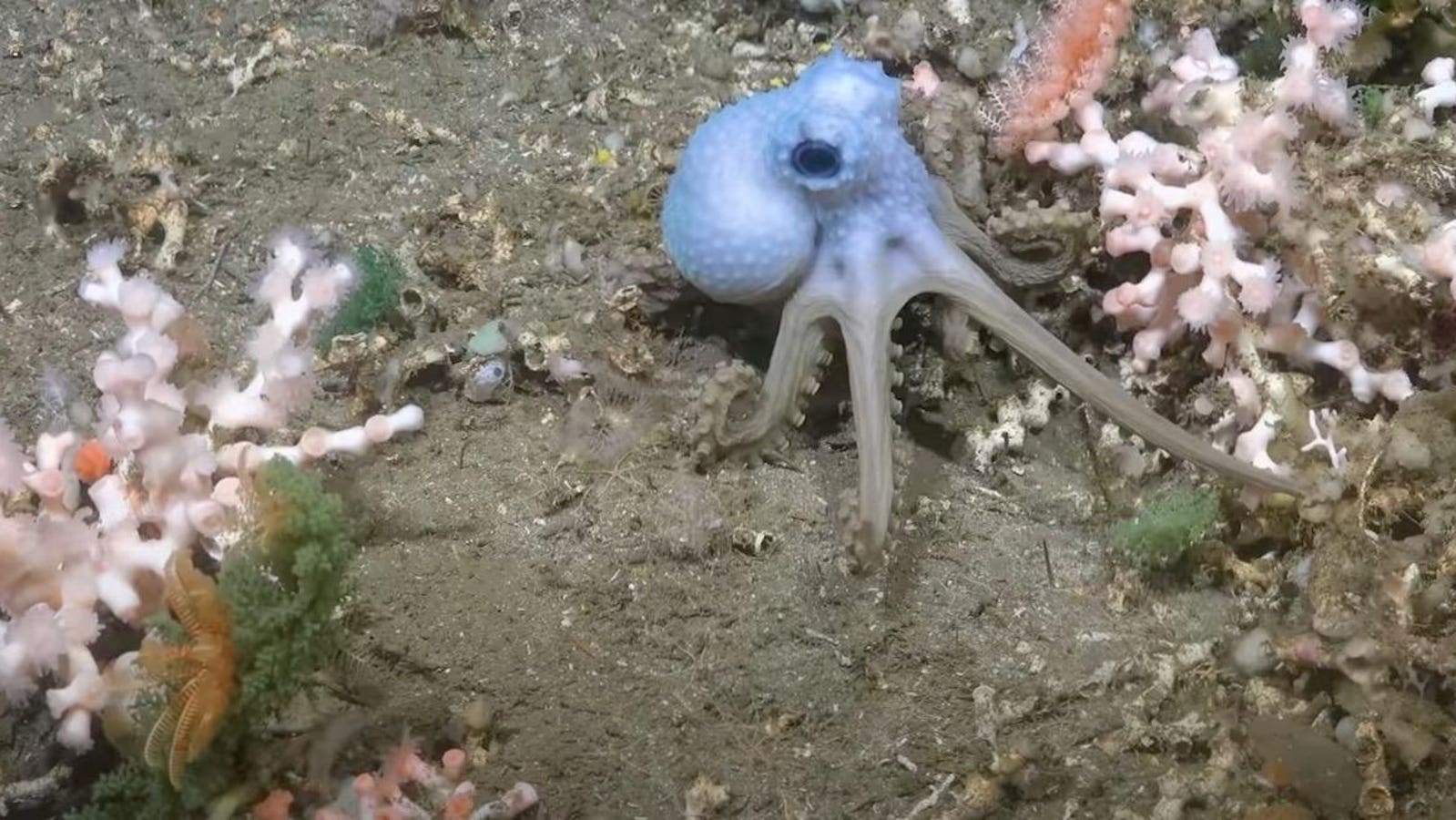Viewers a viral livestream tracking an underwater canyon in Argentina are transfixed by the deep-sea sights.
Schmidt Ocean Institute
Argentinians have a surprising new fixation — a livestream of deep-sea creatures spotted during an international expedition to map one of the country’s largest deep-sea canyons.
The viral feed has so far drawn more than 1.6 million views on YouTube per day, with the comments section overflowing with amazement, wonder and a flurry of Argentinian flags, a show of pride in the country’s scientists and biodiversity.
Part of the fascination with the livestream of the Mar del Plata Submarine Canyon in the South Atlantic lies in the otherworldly creatures that float and walk across the screen — a shimmering neon flying squid, glowing lavender marine invertebrates known as comb jellies, a transparent siphonophore curling and swirling through the dark water, a community of pink crustaceans chilling on the sea floor. One starfish — nicknamed “big-butt starfish” — has become a social media sensation for its resemblance to Patrick Star from the animated TV series SpongeBob SquarePants.
Social media has subbed this starfish seen during the Talud Continental IV expedition the “big-butt starfish.”
Schmidt Ocean Institute
But the feed has also become a rallying point for opponents of Argentine President Javier Milei’s moves to defund science as part of a broader push to slash government spending since taking office in December 2023. Argentina’s scientific community has faced significant job losses and funding cuts as a result of the austerity measures, which protesters have decried as “scienticide.”
“Long live our scientists,” Instagram user Susy Vega wrote in response to a video of expedition discoveries that highlight the richness of underwater life in the Argentine Sea.
The 20-day survey, which continues through Sunday, marks the first time Argentine researchers have been able to see, in situ and in real time, seafloor ecosystems they’ve been studying for more than a decade. In 2012 and 2013, they conducted a series of scientific surveys of the region using low-tech tools such as fishing nets and trawls.
This time around, stationed aboard the 362-foot floating scientific laboratory R/V Falkor (too), they’re capturing high-quality images with a remote-operated robotic vehicle that observes marine life alive in its natural habitat. The ROV also collects specimens of water and sediments, as well as DNA evidence of ocean inhabitants left behind via shed skin and other genetic material that helps paint a picture of life more than 12,700 feet below the sea’s surface. In addition to captivating social media, the expedition has been featured in Argentine news broadcasts on the pages of newspapers.
The Talud Continental IV expedition is sponsored by the Schmidt Ocean Institute, a California-based nonprofit founded by former Google CEO Eric Schmidt and his wife Wendy to advance ocean discovery and conservation through technological innovation. Its R/V Falkor (too) vessel has eight labs, including a science seawater lab, a computer electronics lab and a robotics lab. It has 11 tons of sonars, plus 15 other acoustic sensors, and a special system for assessing microplastics in water.
Support For Argentine Scientists
Most of the Argentine scientists aboard the research vessel come from Conicet, Argentina’s leading scientific funding and research body. An analysis released in November by the the Ibero-American Center for Research in Science, Technology, and Innovation, a group of university-affiliated researchers in Argentina, found that Conicet lost about 1,000 staff members, or 9% of its workforce, since Milei became president.
Many livestream commenters have applauded Conicent for its work, and shared public messages of encouragement.
“Support Conicet and support Argentine science,” YouTube user Victoria Gallo wrote.
Seizing on the surge of public appreciation of the agency, Conicet researchers have, according to Euronews, called for a 48-hour nationwide strike on Wednesday to call attention to their plight. It may be a livestream from the ocean floor, but it’s making waves at the surface.









